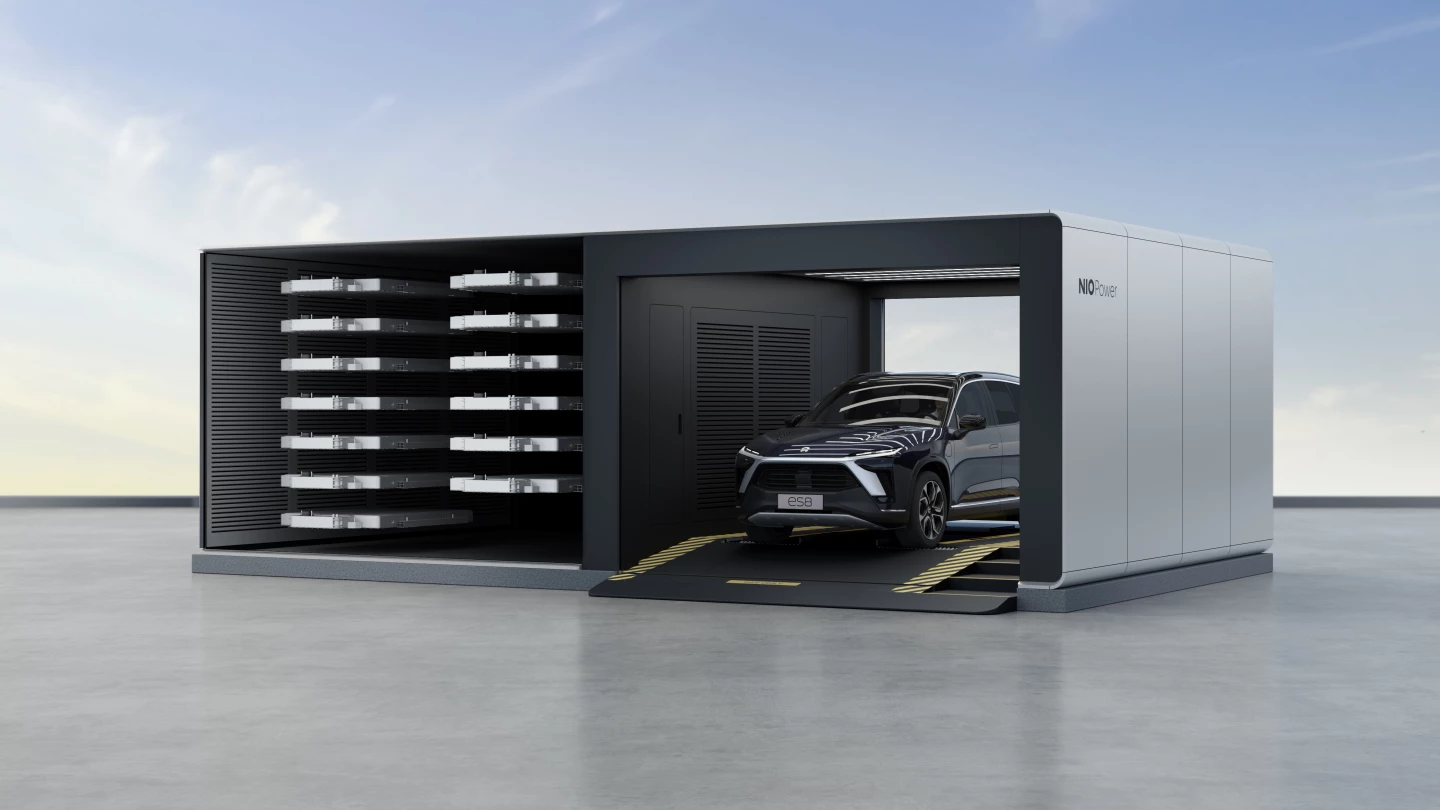Chinese Tesla rival Nio has unveiled its first electric sedan following several SUVs and the Nurburgring-torching EP9 supercar. At Nio Day in Chengdu, the company celebrated some 75,000 sales and launched its first autonomous-capable vehicle, the ET7 sedan, as well as a monstrous 150-kWh "production-ready" solid-state battery pack and the second version of its automated battery-swap station, which could effectively top you up in a matter of minutes instead of making you wait for a charge.
The ET7 is a reasonably tidy, if anonymous-looking four-door starting around the US$70,000 mark. Peak power is a meaty 480 kW (643 hp), split between a 180-kW (241-hp) motor driving the front wheels and a 300-kW (402-hp) unit at the rear. Peak torque is 850 Nm (627 lb-ft), and acceleration will be very quick if unspectacular at 3.9 seconds from 0-100 km/h (0-62 mph).
Awkward lumps over the windscreen and rear window are there to house some of the car's 33 environmental sensors, which include "11 8-megapixel high-resolution cameras, one ultralong-range high-resolution LiDAR, five millimeter-wave radars, 12 ultrasonic sensors, two high-precision positioning units, V2X and ADMS." These can combine to generate up to 8 GB of data every second, to be fed through four Nvidia Drive Orin processors to enable autonomous driving with data-crunching capabilities seven times greater than Tesla's current-gen in-house FSD computers.

Of course, you need a lot more than a ton of data to make a car drive itself, and Nio seems fairly early in its journey to autonomy. But it does have a terrific acronym for its Nio Autonomous Driving system, or NAD. Cars with NADs will gradually gain a sackful of abilities, from various safety systems, to hands-free highway driving, and eventually to urban autonomy and self-parking – but there's no mention of when these abilities will come online, and they're insanely difficult systems to develop, so who knows how long they'll take.
Either way, there's a monthly subscription fee for the NAD service (a line item I wouldn't want to explain to my wife on the bank statement), so if you aren't impressed by it you can flat out stop paying for it.
The ET7 will launch with 70- and 100-kWh battery pack options, and by the end of 2022, there'll also be a whopping-big 150-kWh pack using a high-density solid-state technology that Nio says is production-ready. With an impressive energy density of 360 Wh/kg (the current Tesla Model 3 battery offers around 260 Wh/kg), this beast of a thing will give the ET7 an outrageous range over 1,000 km (621 miles) on a charge, says the company.
Mind you, Nio doesn't appear to be making this battery itself, so that monster solid-state pack will likely be available to other manufacturers that work with the same supplier. And Elon Musk says Tesla is only a few years off its own high-density production battery, which is targeting a density over 400 Wh/kg to pack in even more energy.

Range per charge may be less of an issue for Nio drivers than others anyway; the company also launched the second version of its Power Swap Station. The cars will allegedly drive themselves into these small boxes, and as you sit there, the entire battery pack will be automatically dropped out from under the car and replaced with a fresh one. The Power Swap 2.0 box, says Nio, will charge and swap as many as 312 batteries a day, running a diagnostic on each vehicle to identify faults early.
As such, you can buy the ET7 with a battery you can call your own, or pay less up front and subscribe to a "Battery as a Service" (BaaS) model that lets you swap batteries out at any of 500 Power Swap stations slated to be built across China by the end of 2021. BaaS versions will start around US$58,000, and may prove attractive not just to long-haul travelers, but also to people that might live in apartments or other places with nowhere to charge.

The car's interior looks nice and luxurious, with heating, cooling and massaging seats, a 12.8-inch touch screen and a monster 1,000-watt, 23-speaker sound system standard. Every car has smart air suspension and active damping control. Nio says "the ET7 defines the new standard for premium electric vehicles."
Well, it does look like a pretty neat car, but an outsourced solid state battery pack, a LiDAR and a ton of computing power do not a Tesla-killer make – especially when Tesla's light years ahead of anyone else in the game with autonomy, and has nearly two years to make a bigger battery if Elon decides that'd be worthwhile.
The ET7 is available for pre-order now, with deliveries starting in early 2022. At this stage it's only available in China.
Source: Nio












